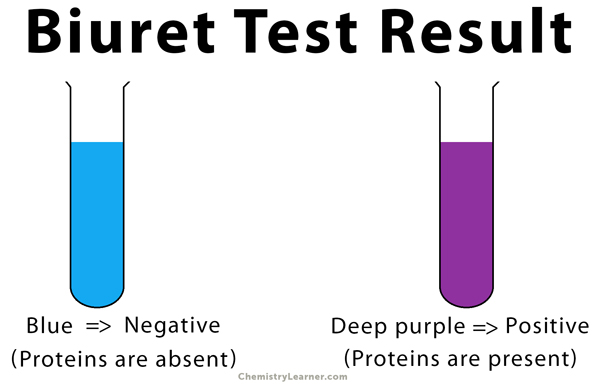Definition: What is Biuret Test?
Biuret test is a chemical test used to determine the presence of peptide bond in a substance. A peptide bond is formed when two amino acids are connected through the amino and carbonyl groups. Protein composes of many amino acids connected to each other through peptide bonds. Hence, Biuret test is used to determine the presence of protein in a sample.
Theory of Biuret Test
In presence of an alkaline solution, blue-colored copper II ion can form a complex with the peptide bonds since the peptide has unshared electron pairs in nitrogen, and oxygen of water. Once this complex has been formed, the solution turns from blue to purple. The deeper the purple color, the higher is the number of peptide-copper complexes. The reaction occurring during the test is referred to as Biuret reaction.
Preparation of Biuret Reagent
The Biuret reagent is a solution that is made of sodium hydroxide (NaOH) or potassium hydroxide (KOH), hydrated copper (II) sulfate, and potassium sodium tartrate. The latter is added to chelate and thus stabilize the cupric ions. Both, NaOH and KOH provide the alkaline medium.
Procedure for Biuret Test
- Take 3 clean and dry test tubes.
- Add 1-2 ml of the test solution, egg albumin and deionized water in the respective test tubes.
- Add 1-2 ml of Biuret reagent to all the test tubes.
- Shake well and allow the mixtures to stand for 5 minutes.
- Observe for any color change.
Results of Biuret Test | |
| Observation | Interpretation |
| No color change, i.e., solution remains blue | Proteins are not present |
| Solution turns from blue to deep purple | Proteins are present |
Importance of the Biuret Reaction
Biuret test is important mainly because it can detect the amount of protein in urine. Excess of protein can lead to kidney disease and other health-related conditions like diabetes mellitus and high blood pressure.











0 Comments